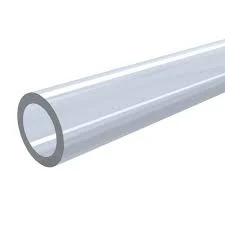Dec . 11, 2024 06:46 Back to list
PPR Pipes and Fittings for Efficient Plumbing Solutions and Sustainable Installations
Understanding PPR Pipes and Fittings A Comprehensive Guide
In the world of plumbing and piping systems, the choice of materials is crucial for ensuring efficiency, durability, and sustainability. PPR (Polypropylene Random Copolymer) pipes and fittings have emerged as a favored solution for various applications, ranging from residential plumbing to industrial installations. This article delves into the characteristics, benefits, applications, and installation processes related to PPR pipes and fittings.
What Are PPR Pipes and Fittings?
PPR is a thermoplastic polymer that exhibits remarkable resistance to heat, chemical corrosion, and aging. It is manufactured through a process that randomly arranges the copolymer into chains, which grants the material its unique properties. PPR pipes are lightweight, flexible, and possess a smooth interior surface that minimizes friction, resulting in better flow rates compared to traditional materials like metal or PVC.
Fittings, integral components of PPR systems, are designed to connect, redirect, or terminate pipe runs. They come in various shapes and forms, including elbows, tees, reducers, and couplings, ensuring flexibility in installation and application.
Key Advantages of PPR Pipes
1. Durability PPR pipes boast a long lifespan, often exceeding 50 years under appropriate conditions. Their resistance to stress, crack, and impact makes them suitable for various environments.
2. Corrosion Resistance Unlike metal pipes, which can corrode over time, PPR pipes do not rust or degrade when exposed to chemicals or moisture. This quality extends their usability in harsh environments and contributes to lower maintenance costs.
3. Thermal Stability PPR pipes can withstand high temperatures, making them ideal for hot water systems. They can handle temperatures up to 95°C (203°F), maintaining their integrity without deformation.
4. Lightweight The lightweight nature of PPR pipes simplifies transportation and installation. This characteristic reduces both the labor costs and the complexity of installation.
5. Non-Toxic PPR pipes are free from harmful chemicals such as lead and heavy metals, making them a safe choice for drinking water applications.
6. Energy Efficiency The smooth interior of PPR pipes leads to reduced friction losses, enabling an efficient flow of fluids. This can contribute to lower energy consumption in heating applications.
ppr pipes and fittings

Applications of PPR Pipes and Fittings
PPR pipes and fittings are versatile and suitable for numerous applications, including
- Residential Plumbing Ideal for potable water supply systems, hot and cold water distribution, and drainage systems. - Heating Systems Frequently used for underfloor heating and radiator connections due to their thermal stability. - Industrial Applications Utilized in various industries for transporting chemicals, gases, and fluids thanks to their chemical resistance. - Agricultural Systems Employed in irrigation systems and for conveying fertilizers and pesticides, demonstrating durability and resistance to environmental factors.
Installation Process
Installing PPR pipes and fittings is relatively straightforward, but it requires careful attention to detail to ensure long-lasting performance. Here is a brief overview of the installation process
1. Preparation Gather all necessary tools, including a pipe cutter, welding machine, and installation fittings. Ensure that the work area is clean and organized.
2. Cutting the Pipes Measure and cut the PPR pipes to the desired lengths using a pipe cutter, ensuring a clean and straight cut.
3. Heating and Welding PPR pipes are typically joined using a heat fusion process. The ends of the pipes and fittings are heated using a welding machine until they reach the melting point, after which they are joined together until set.
4. Testing Once the installation is complete, the system should undergo pressure testing to ensure there are no leaks and that all joints are secure.
5. Inspection and Maintenance Regular inspections should be conducted to monitor for any potential issues. Routine maintenance, although minimal with PPR systems, can help extend the lifespan.
Conclusion
PPR pipes and fittings represent an efficient, durable, and environmentally friendly option for modern plumbing and piping systems. With their numerous advantages and versatile applications, they are becoming the go-to choice for homeowners, contractors, and industrial professionals alike. As industries continue to emphasize sustainability and efficiency, the popularity of PPR systems is expected to rise, solidifying their place in the future of plumbing solutions.
-
Durable PP Rigid Sheet: Lightweight, Chemical Resistant Solutions
NewsAug.21,2025
-
PVC Grey Sheet for Extraction: Chemical Resistant & Durable
NewsAug.19,2025
-
Durable PVC Pipe Fittings for Plumbing & Irrigation Needs
NewsAug.18,2025
-
HDPE Steel Belt Reinforced Spiral Corrugated Pipe | High Strength
NewsAug.17,2025
-
HDPE Pipe Fittings: Durable, Leak-Proof Solutions
NewsAug.16,2025
-
Premium CPVC Sheet: High-Temp & Chemical Resistant Solutions
NewsAug.15,2025

